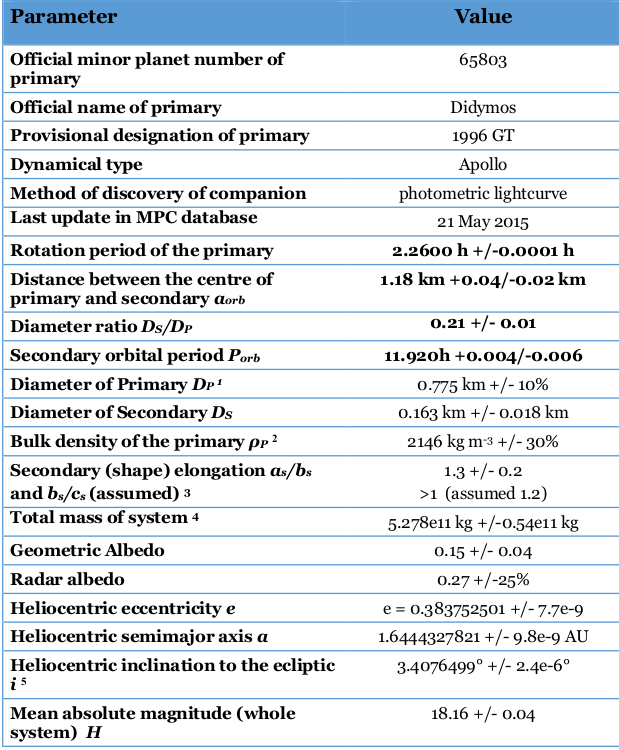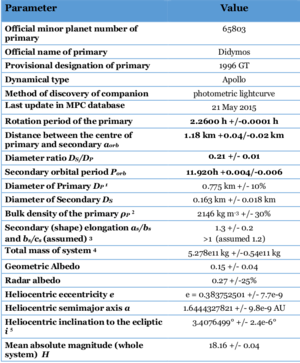Didymos: facts & figures
The only dynamical parameters that could be measured directly from ground observations (indicated in bold in the table below) are the orbital period of the secondary around the primary, their orbital separation, the rotation period of the primary, a pole solution for the primary, and the size ratio of primary to secondary. All other quantities were derived from these parameters. The shape model and volume estimates are based on radar observations combined with optical lightcurve data, leading to a bulk density of 2146 kg m-3 (+/-30%) for the primary and assuming a same value for the secondary.
1 The values of the primary and secondary diameters, as well as the optical and radar albedos, correspond to the baseline pole solution shown below.
2 Based on the known bulk density range for S-type objects (about 2000 to 2700 kg m-3), we assume a value of 2146 kg m-3 for both the primary and the secondary.
3 as/bs from Pravec et al. in preparation. Note that there has been no direct observation of Didymoon’s shape. This value is thus assumed from the average value observed for other binary systems. An ellipsoidal shape is assumed with as ≥ bs ≥ cs.
4 Derived from the observation of period, and inferred semi-major axis; error computed by Lance Benner.
5 The orbital elements are given at epoch 2457000.5 (2014-Dec-09.0), reference: JPL 120 (heliocentric ecliptic J2000); 2015-Jun-04 18:20:59 .








